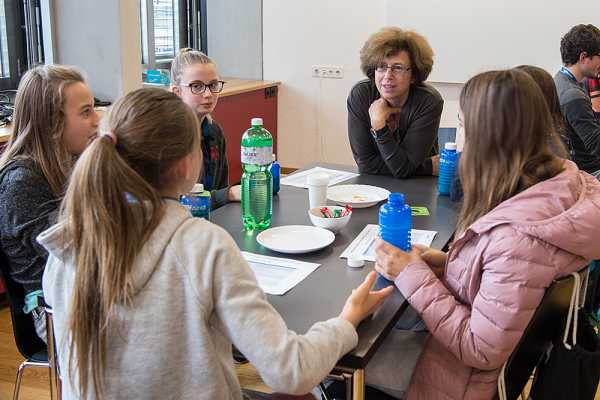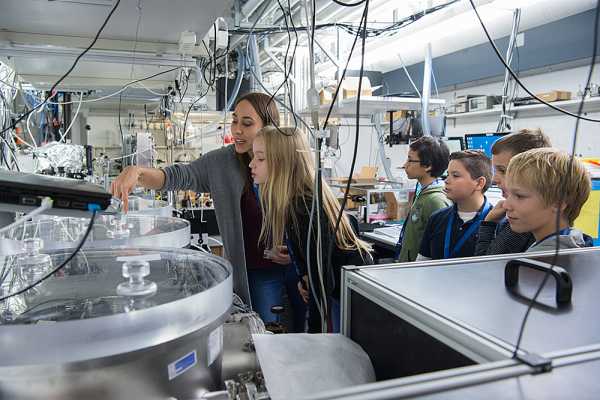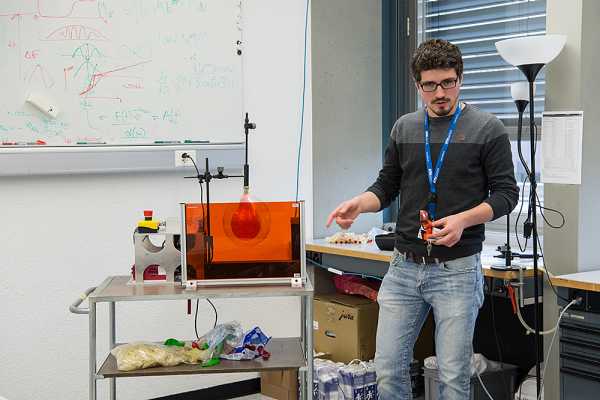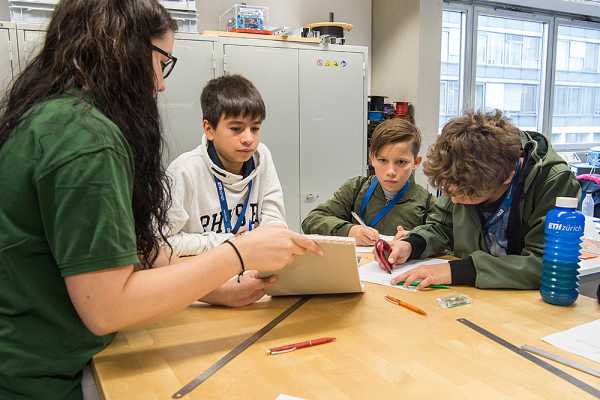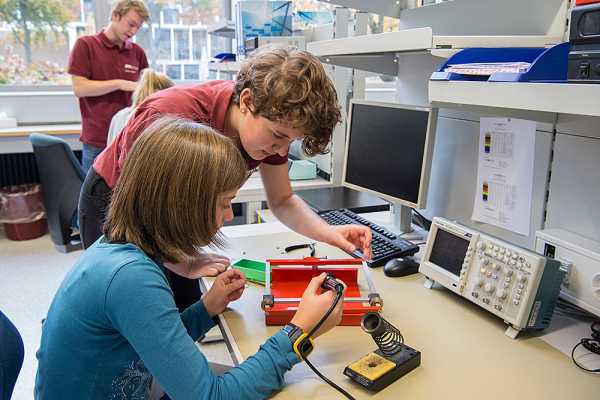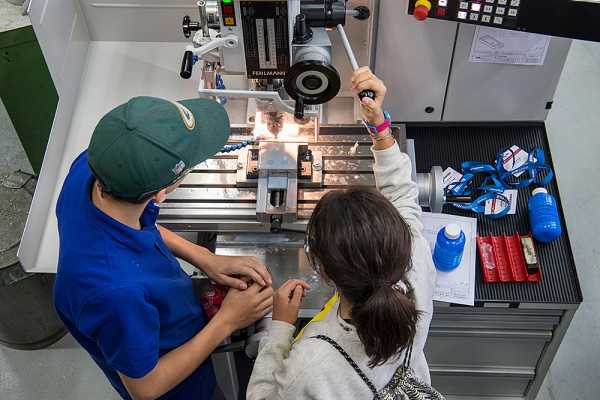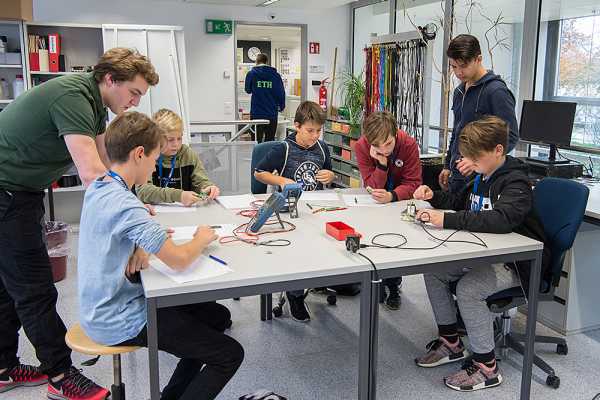A look into the future
Institute for Quantum Electronics (IQE)
For the Swiss national 'Future Day', the Department of Physics had this year two programmes on offer, to grant children a glance into their possible professional futures — be it in science or in a technical profession.
The Ultrafast Laser Physics group of Prof. Ursula Keller and the Vocational Training section of the department both offered dedicated programmes. Some of the 40 youngsters knew exactly which one they preferred. Others said they did not know precisely what they signed up for and would be open for surprises. Often it's the coincidences in life that inspire new ideas and perspectives that haven't been on somebody's radar before. The young guests had plenty of opportunities to ask questions and thus to get answers that nobody in their usual environment could have given them. And who knows, maybe one or the other has already secretly decided to delve deeper into one of these professional worlds.
How do you become a researcher?
How does a laser-research lab look like? And how often do you have to clean up a lab? How does a laser work and why do not all lasers produce the same colour? Aline Mayer and Nadja Hartmann from the group of Prof. Ursula Keller let 20 children participate actively and interactively in their everyday research. Fabian Schläpfer demonstrated the effect of lasers on balloons of different colours, an amazing experiment — which is also available on loan to schools. The introduction by Prof. Keller conveyed the excitement of doing research with ultrafast lasers: you discover things that nobody has ever seen before!
To ETH Zurich without studying
In the engineering office, 20 children of the vocational-training group made design drawings for a flashlight, which they then constructed in the training workshop. In this way, they experienced how a technical drawing becomes a real object. The polymechanics apprentices offered assistance in the mechanical work, and in the electronics training lab components were soldered onto the electronics board, with the help from the electronics apprentices. And does it really work? Brightness measurements for each flashlight provided the answer. In the end, not only the flashlights were shining bright, but also the children's eyes.
